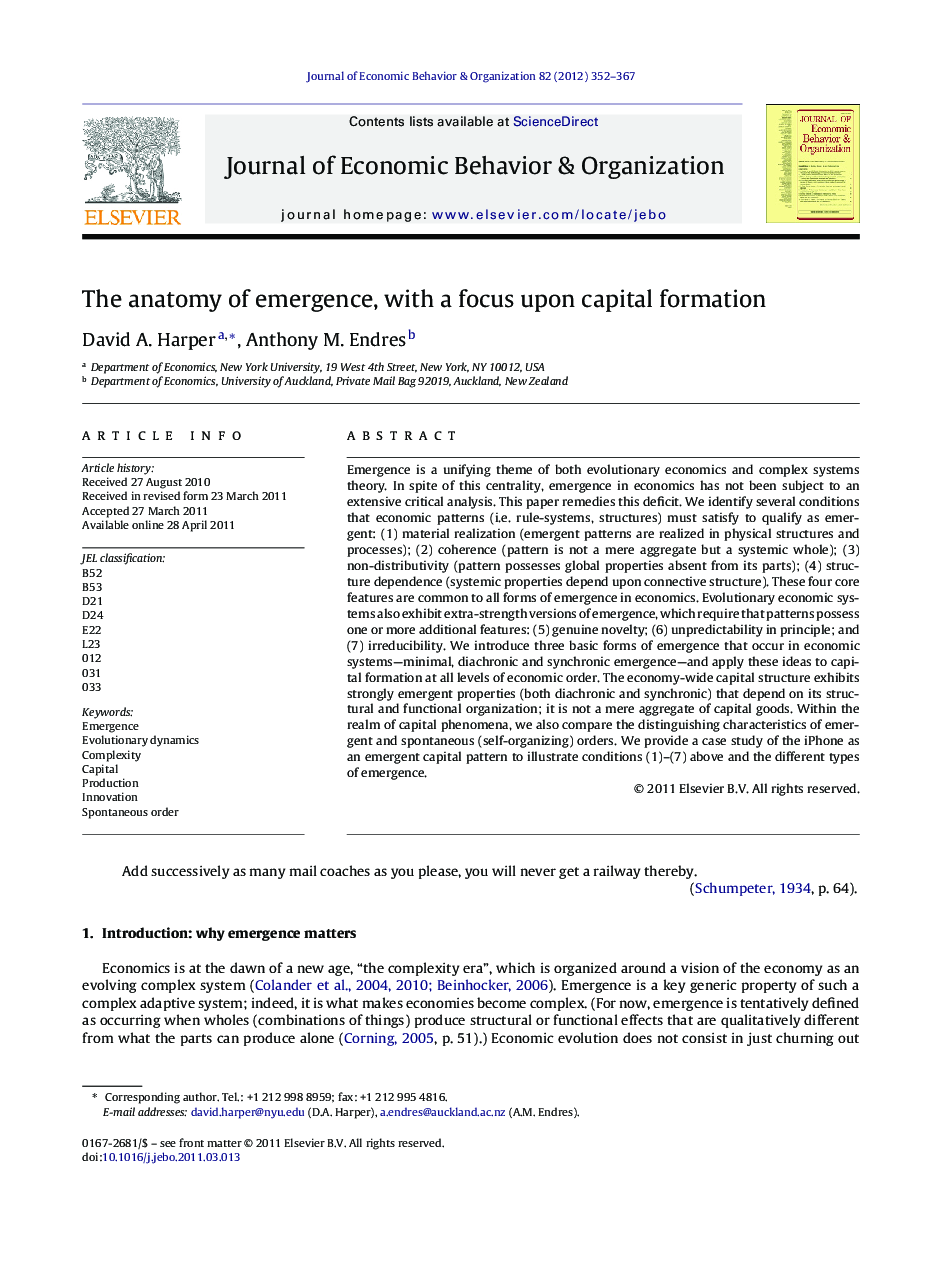| Article ID | Journal | Published Year | Pages | File Type |
|---|---|---|---|---|
| 883777 | Journal of Economic Behavior & Organization | 2012 | 16 Pages |
Emergence is a unifying theme of both evolutionary economics and complex systems theory. In spite of this centrality, emergence in economics has not been subject to an extensive critical analysis. This paper remedies this deficit. We identify several conditions that economic patterns (i.e. rule-systems, structures) must satisfy to qualify as emergent: (1) material realization (emergent patterns are realized in physical structures and processes); (2) coherence (pattern is not a mere aggregate but a systemic whole); (3) non-distributivity (pattern possesses global properties absent from its parts); (4) structure dependence (systemic properties depend upon connective structure). These four core features are common to all forms of emergence in economics. Evolutionary economic systems also exhibit extra-strength versions of emergence, which require that patterns possess one or more additional features: (5) genuine novelty; (6) unpredictability in principle; and (7) irreducibility. We introduce three basic forms of emergence that occur in economic systems—minimal, diachronic and synchronic emergence—and apply these ideas to capital formation at all levels of economic order. The economy-wide capital structure exhibits strongly emergent properties (both diachronic and synchronic) that depend on its structural and functional organization; it is not a mere aggregate of capital goods. Within the realm of capital phenomena, we also compare the distinguishing characteristics of emergent and spontaneous (self-organizing) orders. We provide a case study of the iPhone as an emergent capital pattern to illustrate conditions (1)–(7) above and the different types of emergence.
► We analyze the concept of emergence and distinctive features of emergent phenomena. ► We introduce three types of emergence: minimal, diachronic and synchronic emergence. ► We apply our ideas to capital formation at micro, meso and macro levels of the economy. ► Emergent phenomena are distinguished from spontaneous (self-organizing) orders. ► We provide a case study of the iPhone as an emergent capital pattern.
